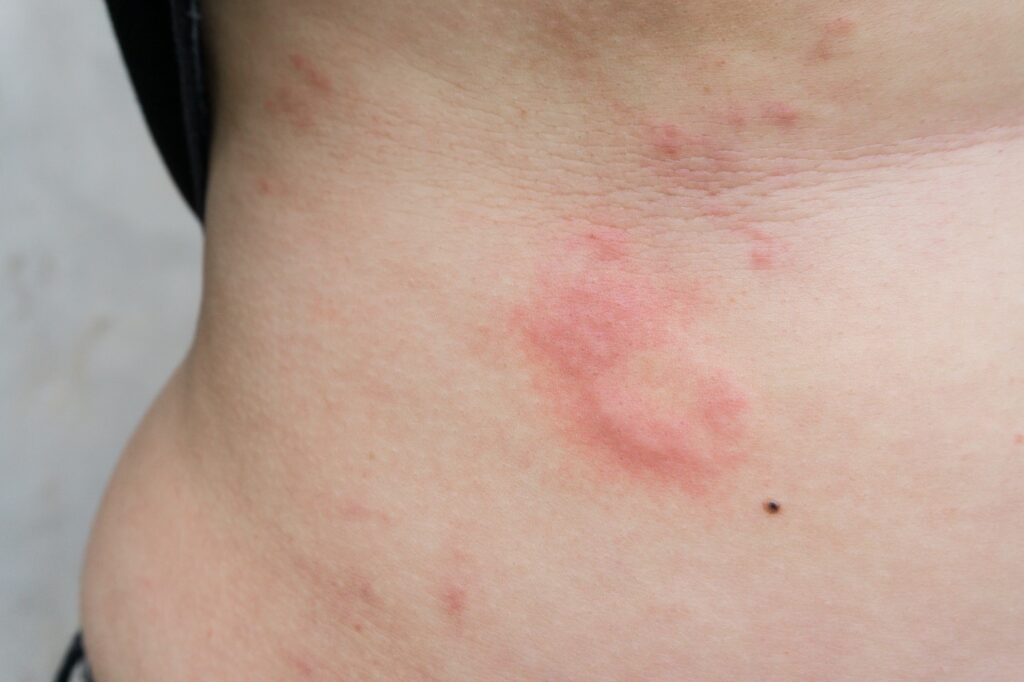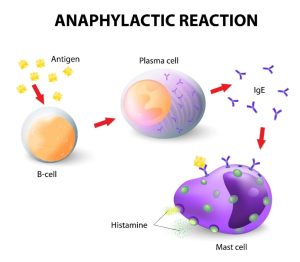The commonality of allergies is prevalent across populations, experienced by 50 million people in the United States annually, with Australia being widely known as the allergy capital of the world.

While pollen allergies are among the most common allergy globally, affecting tens of millions of individuals, there are several different allergy types, each causing some of the typical symptoms.
In what follows, we’ll be detailing the primary differences between mild allergic reactions and severe, life-threatening allergic reaction complications. Further, we’ll distinguish between the signs and symptoms that can be seen with these different scenarios and outline the most common for both mild and severe allergies.
Finally, we’ll seek to gain a better understanding of allergies and their etiology, exploring why these differences occur in the first place.
Allergic Reactions
Allergies are an immune reaction to an otherwise foreign invader, whether the body perceives it as foreign or it actually happens to be foreign or harmful. The most common types of allergies include allergies to pollen, insects, animal fur, food, drugs, mold, and bacteria.
Should the stimulation of immune cells be activated as a result of such an invader, bodily allergic reactions will likely occur, ranging in the severity of symptoms. Allergic reactions, then, are the complications resulting from this perceived or real foreign invasion. The immune system will cause a cascade of certain events to occur that can lead to other events occurring. If the number of “immune events” is minimal, then a milder allergic reaction is the result. If the number of “immune events” is larger and continues to grow, then a more severe allergic reaction is the result.

When an individual comes in contact with poison ivy, for example, they might have no response initially, but then later, they develop a small rash that is mild. Another individual may develop a rash immediately that then becomes bigger and bigger and causes skin breakdown and severe itch. In the second scenario, the individual’s immune response was much more dramatic, and a larger cascade of events occurred at the cellular level. It’s not known why some individuals have more dramatic immune responses, but sometimes it can be predicted based on a family history of allergies.
Mild Reactions Versus Severe Complications
While allergic reactions can range in severity from mild and severe and even life-threatening, the majority of cases are of a mild nature and are much easier to manage.
Some of the most common mild reactions as it pertains to allergies include general itchiness, mild congestion, and temporary rashes or hives. In these cases, the immune response is mild and doesn’t progress to a more severe reaction.
In rare circumstances, severe or life-threatening allergic reactions can develop. These severe allergic reactions and complications are typically characterized by a progression to worsening symptoms that compromise the body’s normal homeostasis, and the condition of anaphylaxis develops.

Anaphylaxis can occur when the immune response of the antigen and antibody causes effects on the blood vessels directly or secondarily. The blood vessel walls become more permeable to fluid, and the vascular smooth muscle relaxes, causing the vessels to dilate. These effects lead to leakage of fluid from the vessels and less pressure in the vessels, which is the condition of shock. An individual can quickly deteriorate and go into cardiac arrest in this advanced critical state.
Common symptoms of anaphylaxis include shortness of breath, rapid heartbeat, and weakness, progressing to confusion and loss of consciousness. This is a life-threatening emergency that must be treated immediately.
Causation of Allergic Reaction
Though medical research has yet to conclusively explain why these reactions occur, genetics is a likely contributor and is certainly a high-risk factor. Should a parent be allergic to bee stings, for example, their child is far more at risk of developing the same or similar allergy.
Whether a mild allergic reaction, such as a skin rash, or a severe allergic reaction leading to anaphylaxis and further complications, the immune system cascade that begins with antibodies attacking the allergen is the causing factor.
These allergic reactions are, for all intents and purposes, the body’s biological defense mechanism against real or perceived foreign invaders and substances.
While the mild symptoms discussed are likely to require only mild treatment and management, such as simple antihistamines, anaphylaxis requires immediate emergent therapy with advanced medication, such as epinephrine, to counteract the immune response.
Other potential treatments and management options include additional medications such as corticosteroids. In mild allergic reactions, some natural remedies, such as herbal teas and essential oils, have been effective.
Final Thoughts
The differences in mild and severe allergic reactions are related to whether the immune response is mild or severe. Again, this is different for each individual. The treatment and management options for each circumstance can be very effective and, in some cases, lifesaving.
